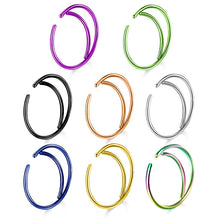
Dec 2022
0 Comments
Detailed graphic explanation of ear piercing

The weather is cold, which is conducive to the recovery of perforation. Today, I will give you a detailed explanation of ear perforation with pictures and texts.
👂Inner Lobe
Ear lobe piercing, the most basic and popular piercing position, is also the first choice for most people as an entry-level piercing (that is, the first piercing of the body)
👂Rook
Because of the structure, this position is not suitable for everyone (but the effect is not particularly prominent.
👂Tragus
This position is the same as the position on the front foot of the antihelix. Whether you can hit it depends on the size of your small ear bones, but the effect of this position is very good.
👂Industrial
The effect is outstanding, but it will test the experience and aesthetics of the piercer. Everyone can do it. I personally think it is the best-looking ear piercing.
👂Outer/Inner Conch
Putting these two together, I personally think that there is not much difference between the two in terms of aesthetics, but when piercing, due to the distribution of the ear bone of the customer, vertical needle insertion or oblique cutting should be considered, so the pain is not bad.
👂Forward Helix
Anyone can hit it, and it is less painful and recovers faster.
👂Anti Tragus
It is the small piece of cartilage protruding from the ear hole, everyone has it, everyone can have it, and everyone looks good when it is done.
👂Transverse Lobe
The earlobe penetration has certain requirements on the thickness of the earlobe. I won't say more about it as explained in the picture. I think it would work better if there were ear bridges.
👂Orbital
In terms of appearance, it is a larger anti-helix (snug), the bigger the better, if you can’t fit the anti-helix, you can wear it on the track, if you can wear the anti-helix, you can even hit the anti-helix together hahahahahahahaha!
👂Helix
Common location, the classic degree is no less than earlobe puncture.

